Wnt/β-Catenin Inhibition Disrupts Carboplatin Resistance in Isogenic Models of Triple-Negative Breast Cancer
- PMID: 34367990
- PMCID: PMC8340846
- DOI: 10.3389/fonc.2021.705384
Wnt/β-Catenin Inhibition Disrupts Carboplatin Resistance in Isogenic Models of Triple-Negative Breast Cancer
Abstract
Triple-Negative Breast Cancer (TNBC) is the most aggressive breast cancer subtype, characterized by limited treatment options and higher relapse rates than hormone-receptor-positive breast cancers. Chemotherapy remains the mainstay treatment for TNBC, and platinum salts have been explored as a therapeutic alternative in neo-adjuvant and metastatic settings. However, primary and acquired resistance to chemotherapy in general and platinum-based regimens specifically strongly hampers TNBC management. In this study, we used carboplatin-resistant in vivo patient-derived xenograft and isogenic TNBC cell-line models and detected enhanced Wnt/β-catenin activity correlating with an induced expression of stem cell markers in both resistant models. In accordance, the activation of canonical Wnt signaling in parental TNBC cell lines increases stem cell markers' expression, formation of tumorspheres and promotes carboplatin resistance. Finally, we prove that Wnt signaling inhibition resensitizes resistant models to carboplatin both in vitro and in vivo, suggesting the synergistic use of Wnt inhibitors and carboplatin as a therapeutic option in TNBC. Here we provide evidence for a prominent role of Wnt signaling in mediating resistance to carboplatin, and we establish that combinatorial targeting of Wnt signaling overcomes carboplatin resistance enhancing chemotherapeutic drug efficacy.
Keywords: WNT pathway; cancer stem cells; patient-derived xenograft models; platinum-resistance; triple negative breast cancer.
Copyright © 2021 Abreu de Oliveira, Moens, El Laithy, van der Veer, Athanasouli, Cortesi, Baietti, Koh, Ventura, Amant, Annibali and Lluis.
Conflict of interest statement
The authors declare that the research was conducted in the absence of any commercial or financial relationships that could be construed as a potential conflict of interest.
Figures
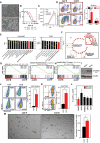

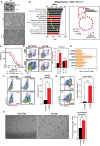

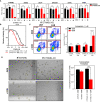
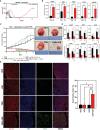
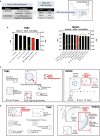
Similar articles
-
The natural compound Jatrophone interferes with Wnt/β-catenin signaling and inhibits proliferation and EMT in human triple-negative breast cancer.PLoS One. 2017 Dec 27;12(12):e0189864. doi: 10.1371/journal.pone.0189864. eCollection 2017. PLoS One. 2017. PMID: 29281678 Free PMC article.
-
Nek2B activates the wnt pathway and promotes triple-negative breast cancer chemothezrapy-resistance by stabilizing β-catenin.J Exp Clin Cancer Res. 2019 Jun 7;38(1):243. doi: 10.1186/s13046-019-1231-y. J Exp Clin Cancer Res. 2019. PMID: 31174562 Free PMC article.
-
Interference KRT17 reverses doxorubicin resistance in triple-negative breast cancer cells by Wnt/β-catenin signaling pathway.Genes Genomics. 2023 Oct;45(10):1329-1338. doi: 10.1007/s13258-023-01437-y. Epub 2023 Aug 27. Genes Genomics. 2023. PMID: 37634232 Free PMC article.
-
Countering Triple Negative Breast Cancer via Impeding Wnt/β-Catenin Signaling, a Phytotherapeutic Approach.Plants (Basel). 2022 Aug 24;11(17):2191. doi: 10.3390/plants11172191. Plants (Basel). 2022. PMID: 36079579 Free PMC article. Review.
-
Triple-negative breast cancer: understanding Wnt signaling in drug resistance.Cancer Cell Int. 2021 Aug 10;21(1):419. doi: 10.1186/s12935-021-02107-3. Cancer Cell Int. 2021. PMID: 34376211 Free PMC article. Review.
Cited by
-
Tumor treating fields affect mesothelioma cell proliferation by exerting histotype-dependent cell cycle checkpoint activations and transcriptional modulations.Cell Death Dis. 2022 Jul 15;13(7):612. doi: 10.1038/s41419-022-05073-4. Cell Death Dis. 2022. PMID: 35840560 Free PMC article.
-
Signaling pathways governing the maintenance of breast cancer stem cells and their therapeutic implications.Front Cell Dev Biol. 2023 Jul 10;11:1221175. doi: 10.3389/fcell.2023.1221175. eCollection 2023. Front Cell Dev Biol. 2023. PMID: 37492224 Free PMC article. Review.
-
Wnt Signaling in the Breast: From Development to Disease.Front Cell Dev Biol. 2022 May 18;10:884467. doi: 10.3389/fcell.2022.884467. eCollection 2022. Front Cell Dev Biol. 2022. PMID: 35663403 Free PMC article. Review.
-
An update on cancer stem cell survival pathways involved in chemoresistance in triple-negative breast cancer.Future Oncol. 2025 Mar;21(6):715-735. doi: 10.1080/14796694.2025.2461443. Epub 2025 Feb 12. Future Oncol. 2025. PMID: 39936282 Review.
-
Natural Products in Preventing Tumor Drug Resistance and Related Signaling Pathways.Molecules. 2022 May 30;27(11):3513. doi: 10.3390/molecules27113513. Molecules. 2022. PMID: 35684449 Free PMC article. Review.
References
LinkOut - more resources
Full Text Sources
Research Materials

